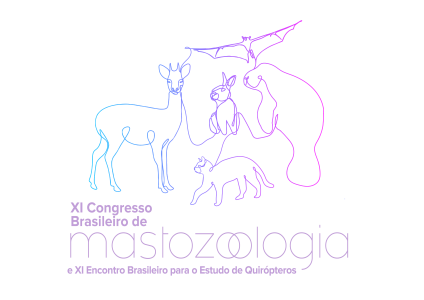Dados do Trabalho
Título:
BIOACCUMULATION OF HEAVY METALS IN BATS FROM COCOA AGROFORESTS IN DIFFERENT LANDSCAPES CONTEXT IN SOUTHERN BAHIA, BRAZIL
Resumo:
Tropical forests are converting to agricultural lands, a process leading to a massive biological simplification due to species loss and associated to use of agrochemicals that contain harmful and bioaccumulative pollutants, like metals. In Bahia, Brazil, an important agricultural product, cocoa (Theobroma cacao), is largely cultivated as structurally complex agroforests considered a biodiversity-friendly land use, as they conserve some of the native vegetation and they are home to several forest species, including a wide range of bats. However, the consequences of years of agrochemicals practices in the local crops are poorly studied. Assessing bioaccumulation of manganese, lead, and copper in 326 bat hair samples collected in different landscape context cacao farms in Ilhéus, Belmonte and Una, and also, modeling the effect of landscape composition in 2 km buffer over metal concentrations, we evaluate the effect of landscape composition in metal bioaccumulation of bats. We found significantly higher concentrations of manganese and lead in Belmonte (0.44 µg/g, 41.20 µg/g) than in Ilhéus (0.08 µg/g, 20.89 µg/g) and Una (0.02 µg/g, 20.62 µg/g). A low proportion of the samples had copper and we found no differences in concentration between sites. However, models show a positive effect of cocoa plantations coverage on it. In addition, we observed a negative effect of forest cover and a positive one of open areas on lead. These results agree with observation of other studies, where metal contamination can be affected by different anthropic activities. Urban and agricultural expansion over natural environments lead to higher levels of pollution, which are subsequently reflected in fauna. This was particularly evident for lead, frequently found in our samples and associated with the absence of forests and open areas expansion and also with higher values in the Belmonte region where higher deforestation and intensively managed agricultural activities occurs. Also, the highest values of manganese observed in this region could be a consequence of the use of agrochemicals that contain it, like Mancozeb or other, usually used in the more managed crops like eucalyptus or coffee that characterize this region. So, it is very likely that their residues are reaching the ecosystems. As our models did not allow to associated manganese with a specific component of the landscape, we encourage expand the study of the presence of this metal in that region. The positive effect observed of cocoa plantations on copper could reflex current or past use of chemicals such as copper sulfate. This product is usually used to control cocoa witches' broom, a disease that strongly affected Bahia cocoa production during the 1980s. Through this study we have demonstrated possible relationships between different land uses and the bioaccumulation of hazardous metals. Also, this study was the first register of Mn, Pb, and Cu levels for many bat species. Due the high persistence in the environment and the harmful effects already reported for these pollutants, the results of this study could support the adoption of organic farming techniques that minimize chemical deployment over the ecosystem.
Keywords: Agrochemicals; Atlantic Forest; Bioindicator; Chiroptera, Pollution.
Financiamento:
Área
Ecologia
Autores
Julián Barillaro, Letícia Soto da Costa, Adailson Pereira de Souza, Ricardo Siqueira Bovendorp
